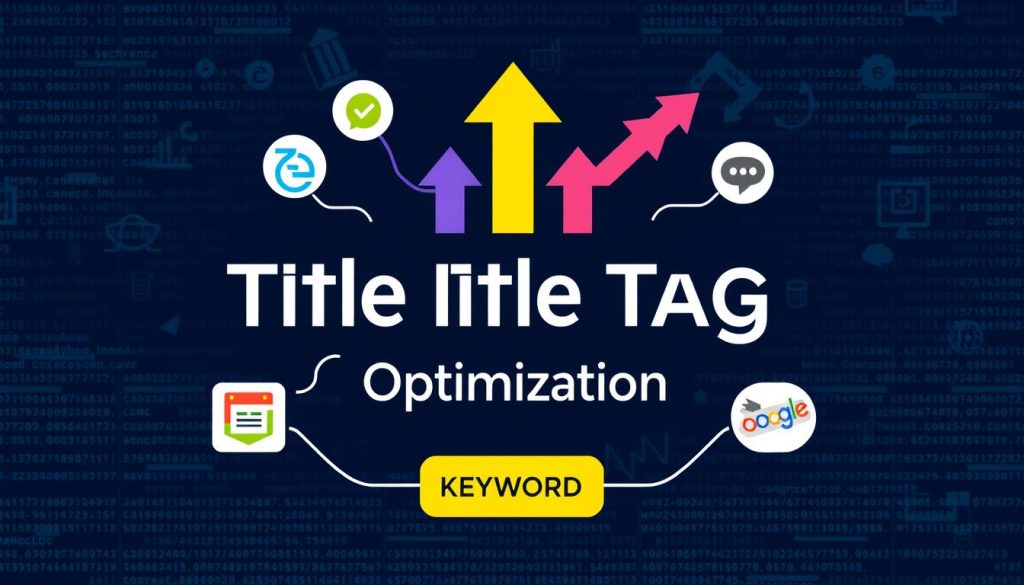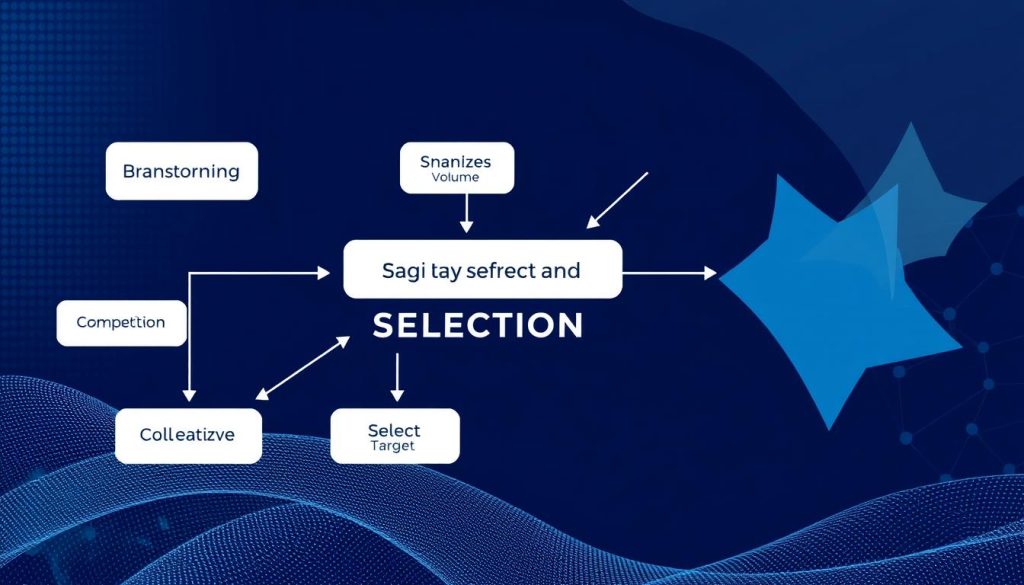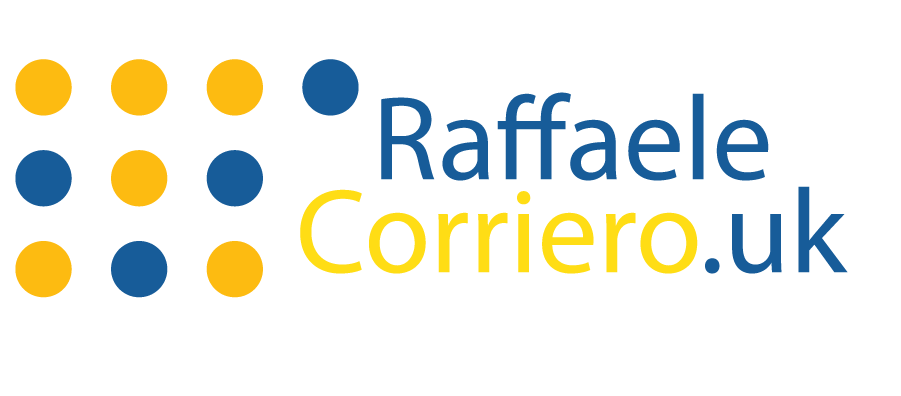In today’s digital world, using SEO is not just nice to have, but a must for a brand’s online presence. The mixture of search engine optimisation techniques is key in a good digital plan. Keyword optimisation is crucial for linking content with the right viewers. This starts with placing keywords in webpages, which includes titles, URLs, and descriptions.
At the core of SEO, keywords are vital. They help search engines like Google understand and categorize web pages. This affects how websites show up in search results and how users find them. Experts in SEO know that putting keywords in the right spots is more effective than just adding them randomly.
To get better at search rankings, it’s important to know what parts of a website can be bettered with keywords. From eye-catching titles to URLs that make people want to click, and enticing descriptions. Each part is a chance to show search engines your content’s relevance and authority.
Key Takeaways
- Strategic keyword integration is pivotal for enhancing online visibility and search rankings.
- The use of keywords in titles, URLs, and meta descriptions is a foundational SEO best practice.
- Optimised components contribute to improved user engagement and website authority.
- Keywords should be seamlessly embedded to maximise search engine optimisation techniques without compromising the user experience.
- Understanding where and how to use keywords is the first step in crafting an effective SEO strategy.
The Importance of Keyword Integration in SEO

Using the right keywords on your site doesn’t just make it more visible. It also boosts its chance to rank higher on search engines. This is vital for being seen online and meeting your audience’s needs. Knowing how to match keywords with what people are looking for can really improve your visibility.
Understanding SEO beyond Basic Keyword Usage
Good SEO goes beyond just using popular keywords. It means understanding why those terms are important to your audience. This insight is key for predicting and meeting user needs. It helps keep customers engaged and coming back. Looking at search trends and aligning your content with them enhances your SEO success.
How Proper Keyword Placement Impacts Visibility
It’s not just about choosing the right keywords. Where you place them matters too. Putting them in titles, headings, and within the article can greatly improve your search rank. This strategy is more than just tossing terms around. It’s about placing them where they show your content’s relevance and authority.
The following image shows how placing keywords smartly can boost a website’s search performance:
- Headers & Titles: Keywords in headers and titles highlight your main points. This makes it easier for search engines to understand and classify your page.
- Meta Descriptions: While not directly affecting rankings, the right keywords in meta descriptions can improve click-through rates from search results.
- First 200 Words: Having keywords in the first 200 words signals relevance to search engines from the start of your content.
Thoughtful keyword integration improves your visibility and search rankings. It may even lead to more conversions. Focus on quality and relevance of keywords over quantity. This approach aligns with search algorithms that value user satisfaction and content relevance.
Strategising Keyword Placement in Website Titles

Effective SEO strategies rest heavily on mastering title tag optimisation. Creating convincing page titles involves more than just using the right keywords. It’s about arranging these tags so both users and search engines see the page’s relevance and value. This harmony is key for SERP ranking factors, affecting how visible your site is in search results.
To make your title tags truly stand out, try these methods:
- Relevance and Conciseness: Use keywords that mirror the page’s actual content. Keep the title clear and to the point.
- Brand Integration: Adding your brand name in the title can boost recognition and clicks, especially for known brands.
- Front-loading Keywords: Put important keywords at the beginning of the title to quickly draw attention from users and search engines.
- Differentiation: Ensure your titles stand out from competitors’. This gives your site a unique edge that attracts more clicks.
Grasping and using these tips in your title tag optimisation can greatly enhance your online presence and SERP rankings. It aligns your webpage’s core content with its goal, grabbing user interest right away. This is crucial in a competitive online space.
Optimising URLs for Enhanced Search Engine Ranking

In the world of SEO, how your URLs are structured is very important. A URL that’s clear and simple helps your site rank better and improves user experience. We’ll look at how to make your URLs SEO-friendly and keep your link structure tidy.
Incorporating Keywords into Slugs
Using relevant keywords in your URL slug boosts your site’s SEO. It makes the link easier to read and tells search engines what your content is about. The key is making sure the slug matches the content of the page well.
Maintaining a Clean URL Structure
Keeping your URL structure neat is crucial for SEO and making your site easy to use. A straightforward link structure avoids confusion, and search engines find it easier to crawl your site. Also, a neat link looks more trustworthy to users, making them more likely to click on it.
| Element | Importance in SEO | Impact on User Experience |
|---|---|---|
| SEO-friendly URLs | High | Increases trust and click-through rates |
| Keywords in Slugs | Medium to High | Improves content relevancy and understanding |
| Readability in Links | Medium | Enhances navigation and retention of URL |
Writing Effective Meta Descriptions with Targeted Keywords

Meta descriptions play a vital role in digital marketing. They improve SERP optimisation and boost click-through rates. By embedding targeted keywords attractively, we can provide a clear preview of the webpage.
The Role of Meta Descriptions in Click-Through Rate
Meta descriptions significantly impact user engagement. If you craft them well with the right meta tags, they tempt readers to click on the link. This increases the website’s visibility and drives more traffic.
Meta Description Length and Keyword Density
The length and keyword density of meta descriptions are important. Ideally, they should be about 155 characters. This length allows for essential keywords without overloading the content. Using keywords wisely keeps the description clear and engaging.
Putting keywords at the start of the description makes them stand out to both search engines and users. This balances being informative, relevant, and appealing in a short text.
The smart use of meta tags and keywords aims for more than high rankings. It’s about creating engaging descriptions that draw real audience interest.
Crafting Content that Balances Keywords and Readability

The art of content creation is more than just sharing information. It’s about keeping the reader hooked from start to finish. Good content manages to blend important keywords with engaging writing. This makes the piece both interesting for readers and effective for SEO.
To do this well, keywords must be woven into the text so they feel natural. This way, they add to the content without taking away from its meaning. Search engines prefer content that people find useful and engaging.
Writing content like this requires a deep understanding of language. Writers need to anticipate what readers are curious about. They also need to weave in keywords without making them stick out. Here’s how it can be done:
| Without Keyword Focus | With Natural Keyword Inclusion |
|---|---|
| Discover ways to enhance your writing. | Enhance your content creation skills for better reader engagement. |
| Learn how to keep your audience interested. | Learn how to keep your audience engaged with captivating content. |
The table shows the difference keyword inclusion can make. By blending in keywords, sentences become both richer and more search-friendly. They not only contain the right keywords but also match what users are searching for. This boosts both SEO and reader enjoyment.
Conclusively, making great content is about finding the right balance. It’s about writing that is both rich in keywords and enjoyable to read. Remember, if your content is useful for your audience, search engines will like it too.
Utilising Keywords in Image Alt-Texts and Filenames

Using keywords in image attributes and filenames is key for visuals and SEO. Paying close attention improves image SEO and makes your website more visible in image searches.
Improving Image Search Results with Keywords
Adding the right keywords to alt attributes is crucial for image SEO. These attributes help describe what’s in the pictures, aiding search engines and tools like screen readers. This approach boosts your images’ chances of showing up in searches.
SEO Benefits of Descriptive Image Naming
Choosing descriptive, keyword-rich names for your image files is vital. This gives search engines context, helping them index your images better. Thus, your pictures are more likely to appear in search results.
Let’s look at a comparison table. It shows different naming and alt-text strategies and their effect on SEO and accessibility:
| Technique | SEO Impact | Accessibility Enhancement |
|---|---|---|
| Generic Filenames | Low | Low |
| Keyword-Rich Filenames | High | Medium |
| Alt Text with Keywords | High | High |
| No Alt Text | Low | Very Low |
The table shows how using keywords in filenames and alt attributes boosts SEO. It also improves accessibility. This strategy makes images more useful, increasing site visibility and making content accessible to everyone.
Keyword Research: Analysing & Choosing the Right Terms

In digital marketing, building a strong SEO strategy starts with good keyword discovery. It’s about finding terms that match what you offer and how your audience searches. This ensures your content reaches the right people.
The first step, search term analysis, involves looking closely at potential keywords. You need to see if they have enough search volume and aren’t too competitive. Picking the right relevant keyword selection is key. It affects how much quality traffic you get, which can increase sales and ROI.
Here’s how to pick good keywords:
- Use tools to find a wide range of keyword ideas.
- Check if each keyword fits your products or services.
- Look at how often each keyword is searched and its competition.
- Choose keywords that have a lot of searches but not too much competition.
You should also think about short-tail and long-tail keywords. Short-tail keywords have more searches but also more competition, making them harder to rank for. Long-tail keywords are more specific. They may lead to fewer searches but can result in more sales because they target specific needs.
| Keyword Type | Typical Search Volume | Competition level | Conversion Potential |
|---|---|---|---|
| Short-tail | High | High | Low |
| Long-tail | Lower | Medium to Low | High |
To sum up, choosing the right keywords after thorough keyword discovery, search term analysis, and relevant keyword selection is essential for SEO success. By focusing on the right keywords, you can boost your online presence and meet your business goals.
Integrate Keywords into Titles, URLs, Meta Descriptions, Content, and Images

To succeed in holistic SEO strategy, it’s vital to weave keywords throughout all website parts. This includes titles, URLs, meta descriptions, content, and images. Such a multi-layered strategy doesn’t just improve search engine visibility. It also makes different parts of your online space work better together.
Coordination Between Various Elements for Unified SEO Strategy
Creating a robust SEO plan requires everything to work as one. This unity, especially when filled with well-thought-out keywords, boosts your digital marketing efforts. It brings more of the right visitors to your site.
Keyword Integration for Multifaceted SEO Enhancement
Smart keyword use lets companies tap into the full power of SEO for a market edge. This approach moves past just adding keywords. It builds a digital ecosystem that excels in many areas.
| SEO Component | Importance | Recommended Action |
|---|---|---|
| Titles | High impact on user engagement and SEO ranking | Use targeted, relevant keywords that align with content |
| URLs | Critical for search engine indexing | Incorporate succinct, keyword-rich slugs |
| Meta Descriptions | Improves click-through rates from search results | Embed compelling keywords to match search intent |
| Content | Directly affects SEO and user experience | Balance keyword density with readability |
| Images | Enhances article attractiveness and SEO relevance | Utilise descriptive, keyword-enriched alt texts |
Creating a Cohesive SEO Strategy Across Your Digital Presence

Today, having a wide-reaching SEO strategy that works well with your marketing is key. It’s about more than just keeping your brand consistent. It’s also about making sure all your online marketing efforts are in sync. This helps build a strong and unified digital presence, boosting your online visibility and making your brand more powerful.
Consistency in Keyword Use Across Online Platforms
Using the same keywords across all digital platforms is essential for a unified brand voice. It helps make your brand stand out in a crowded online world. By using consistent keywords everywhere, from your main site to social media, you enhance your SEO and create a connected marketing network.
Aligning SEO Tactics with Overall Marketing Strategy
It’s crucial to make sure SEO strategies fit with your general marketing goals. This makes your marketing work better as a whole, with every online move boosting your main business aims. Synchronising your digital marketing is key, ensuring every online step is search-engine friendly and fits your larger marketing strategy.
Here’s a table showing how SEO can improve your overall marketing efforts:
| SEO Element | Contribution to Marketing Strategy | Impact on Branding |
|---|---|---|
| Consistent Keyword Usage | Enhances content discoverability across platforms | Strengthens brand association and recognition |
| Digital Marketing Synchronisation | Tailors marketing efforts to maximize engagement | Ensures a cohesive brand narrative across digital touchpoints |
Integrating SEO with your digital marketing can boost your position on search engines and connect better with your audience. The real success of an SEO strategy is its seamless integration with overall marketing, strengthening your brand and synchronising all digital marketing efforts.
The Significance of Title Tags in Search Engine Algorithms

Title tag relevance, SERP influence, and algorithmic weighting greatly improve a webpage’s visibility. Title tags help convey what the content is about to users and search engines. This influences how high a page ranks in search results.
Title tags are key for effective SEO strategies. They are often the first thing potential visitors see in search results. A well-optimised title tag can increase click-through rates, bringing more traffic to your site.
In terms of algorithmic weighting, title tags are given high importance. Search engines like Google look at them to figure out how relevant a page is to a search. Having the right keywords in your title tag helps with your search ranking.
Below is a table that explains the relationship between title tags and search rankings. It shows why it’s important to use strategic practices in title tag creation to improve SERP influence.
| Factor | Importance in SEO | Impact on SERP Ranking |
|---|---|---|
| Keyword Placement | High | Direct influence on relevancy to search queries |
| Title Length | Moderate | Optimal length leads to better user engagement and SERP display |
| Relevance to Content | High | Ensures alignment with page content enhancing relevancy scores |
| Uniqueness | High | Prevents SERP penalties for duplicated content across pages |
Using targeted keywords in title tags, while keeping them short and relevant, is essential. This not only increases your site’s visibility but also boosts user engagement. Both are key for a successful SEO strategy.
Analysing Competitor Keywords for Strategic Insight

In today’s competitive digital world, using strategic SEO insights for competitive keyword analysis is crucial. It lets you know what keywords bring traffic to your competitors. With this knowledge, companies can improve their SEO plans to compete better.
Learning from Competitors’ SEO Approaches
Looking at how successful competitors use SEO shows useful SEO benchmarking methods. This can guide your own brand. Understanding their strengths and weaknesses gives you an edge and helps avoid common mistakes.
Using Competitive Analysis Tools to Identify Opportunities
Many tools exist for in-depth competitor keyword analysis. They find gaps in your keyword strategy and highlight areas to enhance. Using these insights can boost web traffic and SEO success.
| Feature | Benefit |
|---|---|
| Keyword Gap Analysis | Identifies keywords your competitors rank for, which you do not. |
| Market Share Insights | Provides visibility on the amount of traffic driven by specific keywords. |
| Content Strategy Review | Offers insights into the content approaches that are winning audience engagement. |
By analysing carefully and using strategic SEO insights, companies can create an effective strategy. This strategy focuses on the best keywords and enhances their online visibility.
Adapting to Changing Search Engine Algorithms and SEO Trends
The digital world is always changing. SEO is no different. As search engines change and people’s online habits evolve, keeping up with SEO is crucial. It’s not just about staying in the game. Adapting to SEO changes quickly is essential for staying visible online.
Staying Current with SEO Best Practices
For success in this ever-changing digital world, marketers need to stay committed. Ongoing SEO upkeep is vital. Recognising and using new SEO tactics can boost a website’s user engagement. This, in turn, raises its authority and place in search results.
Periodic Review and Update of SEO Components
A strong SEO strategy isn’t something you can just set up and forget. It needs regular checks and updates. Things like keywords, meta tags, and content quality must be reviewed often. This keeps your site performing well, even as digital trends and what people want keep changing.







